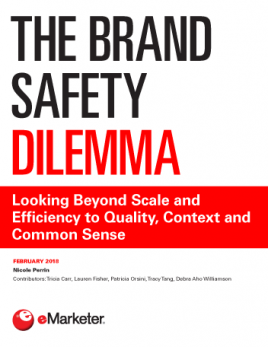Executive Summary Concerns about brand safety are nothing new—one well-worn example is that of an airline that wants to make sure its ads don’t show up next to news of an air tragedy. Everyone from marketers to consumers can easily understand why brands don’t want to associate with content that makes them look bad in any way. Still, the past 18 months have been full of brand safety controversies, suggesting that some of these concerns fell by the wayside and brands are waking up to them again. YouTube, with its long tail containing controversial video content, and Facebook, with its Feed tainted with “fake news,” were significant sources of brand safety scandals in 2017, but US advertisers continue to pour more than nine in 10 new digital ad dollars into the Facebook-Google duopoly. The rise of audience targeting and people-based marketing has allowed brands to follow their customers wherever they go—but that has led those brands into some unsavory places, and now many are looking to whitelists, blacklists and private marketplaces to get back out. The flight to quality is accompanied by renewed interest in contextual targeting, with publishers and platforms ready to remind brands that the right context can also boost ad effectiveness. Virtually all brands are making changes in how they operate in digital media to be safer going forward. This includes demanding more transparency and investing more ad dollars in quality environments.










